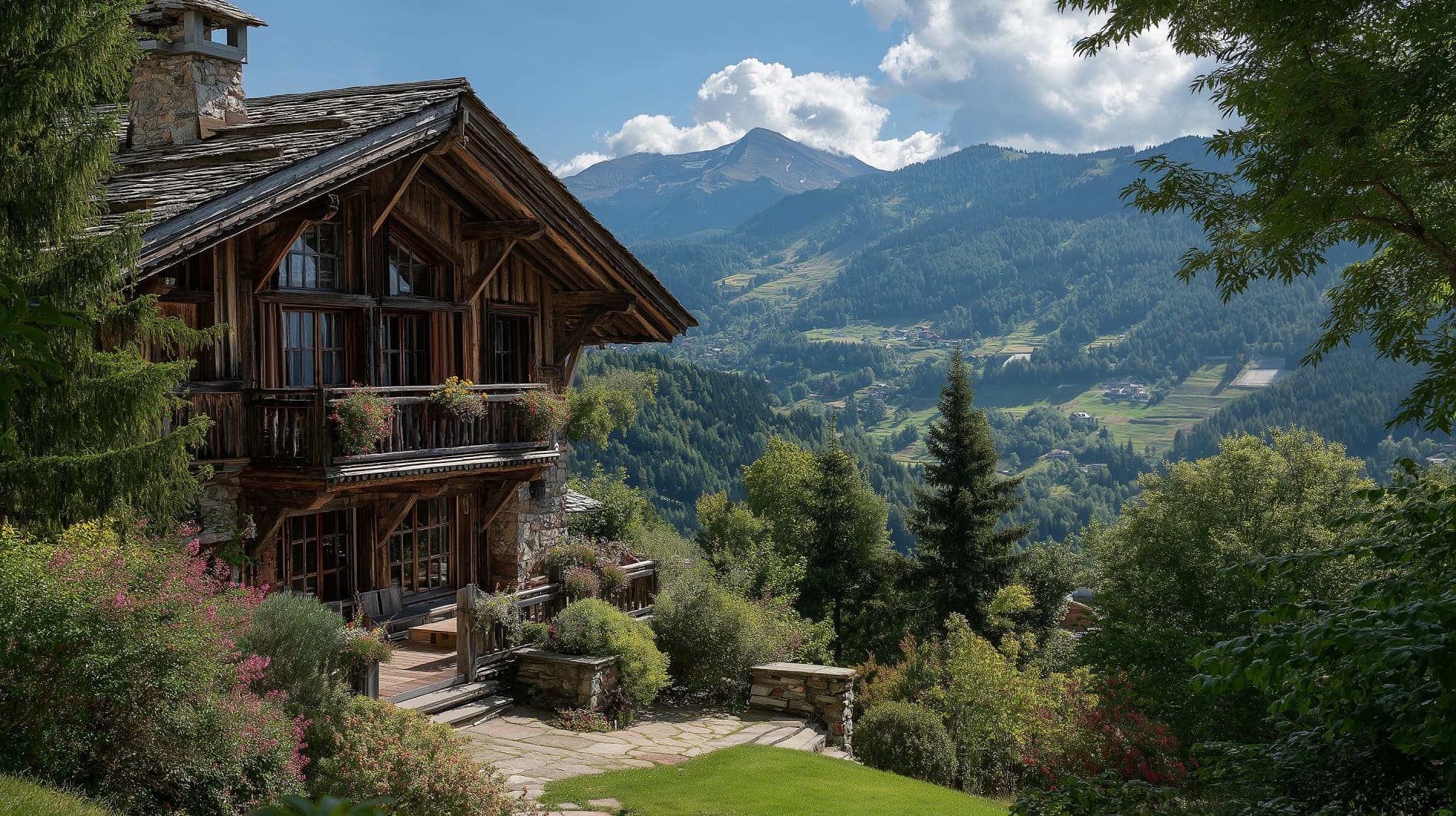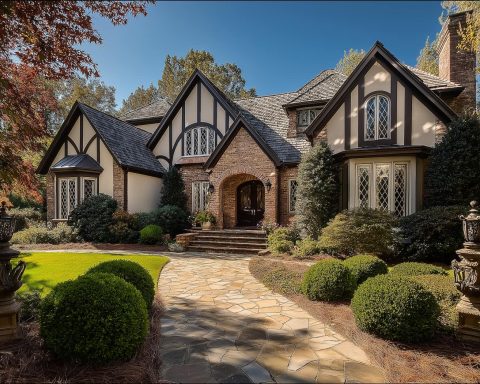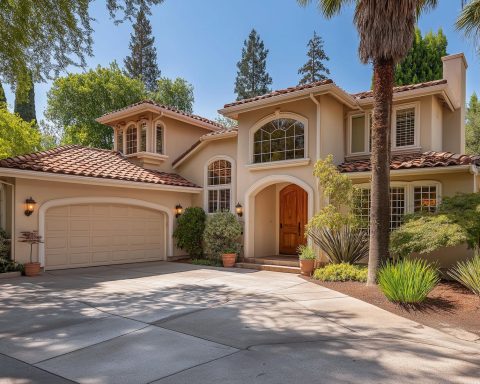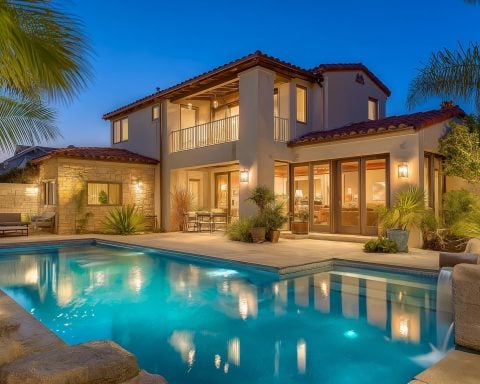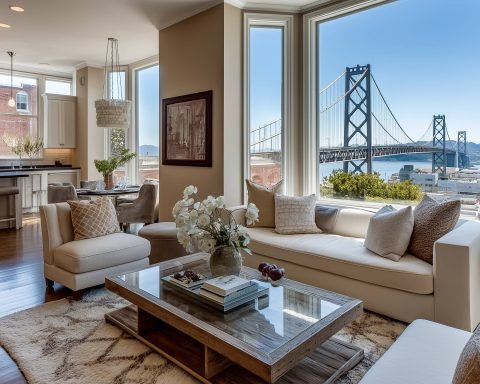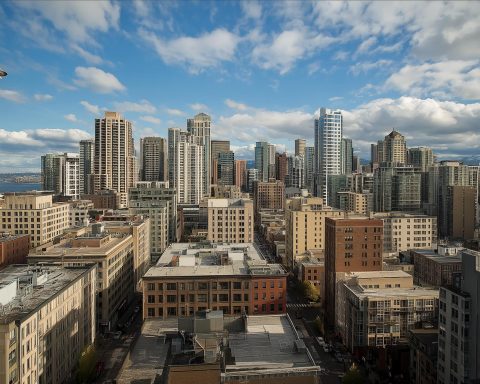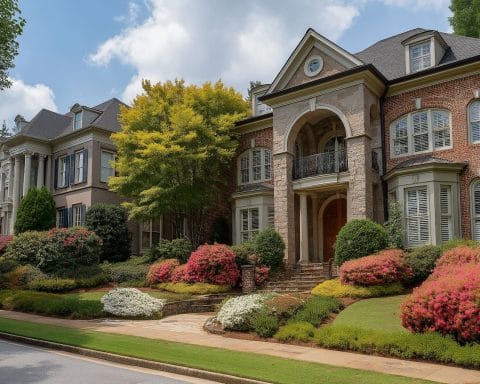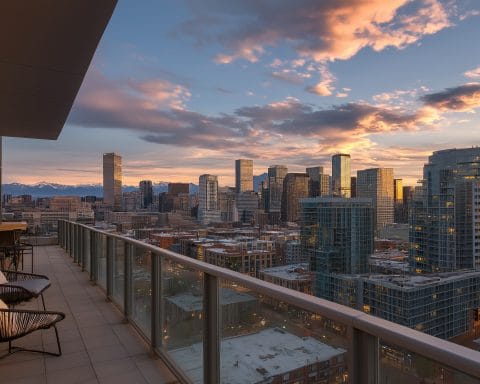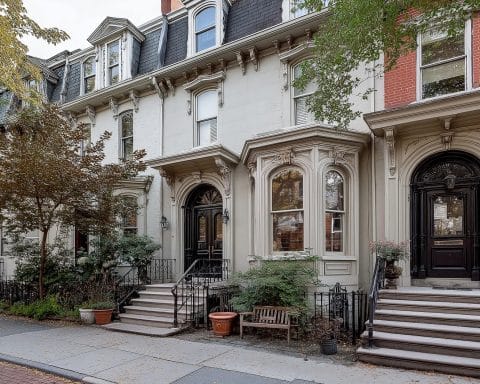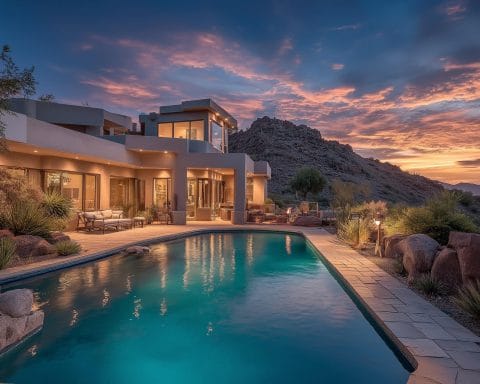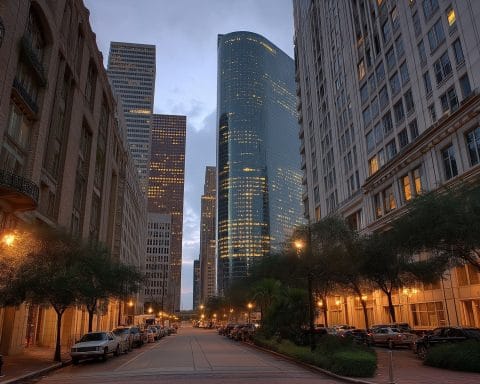Overview: Megève’s Real Estate Landscape in 2025
Megève’s property market remains one of the most sought-after in the Alps, characterized by strong international demand and limited supply. Overall Alpine real estate prices rose modestly by around 3% in 2024, with French resorts averaging +1.5% growth (trailing Swiss resorts at +3.5%) agenceboan.com. In Megève, prices have stabilized at a high level after significant pandemic-era gains – prime chalets here command roughly €15,000 per square meter naef-prestige.ch, placing the village among the priciest French resorts (only Val d’Isère is higher). An estimated 90% of Alpine property purchases are for seasonal rental investment collection-chalet.co.uk, underscoring the market’s reliance on tourism. Buyers continue to view Alpine real estate as a “safe bet”, supported by the resort’s prestigious reputation and scarce buildable land which help preserve long-term value cimalpes.com.
To illustrate current pricing, Table 1 shows average values by region and segment. Prime resorts like Courchevel 1850 and Val d’Isère see ultra-high prices (>€16,000/m²), whereas lesser-known areas in the Southern Alps offer much lower entry points around €2,300/m² investropa.com investropa.com. Megève itself falls on the higher end of the spectrum: around €11,000 per m² on average, similar to Courchevel (overall) and behind only Val d’Isère’s ~€16,100/m² collection-chalet.co.uk. This places Megève firmly in the top tier of Alpine markets by price, reflecting its luxury resort status and international appeal.
| Segment | Avg Price (€/m²) | Recent Growth |
|---|---|---|
| Northern Alps – Apartments | €3,574 | +20% (2019–2022) collection-chalet.co.uk investropa.com |
| Northern Alps – Chalets | €4,265 | +20% (2019–2022) collection-chalet.co.uk investropa.com |
| Southern Alps – Apartments | €2,340 | +6% (2024) collection-chalet.co.uk investropa.com |
| Southern Alps – Chalets | €2,534 | +6% (2024) collection-chalet.co.uk investropa.com |
| Prime Resort (Val d’Isère) | €16,100 | +40% (2014–2024) collection-chalet.co.uk investropa.com |
Table 1: French Alpine real estate prices by region (2025). Megève and Courchevel average around €11,000/m², versus Val d’Isère at ~€16,100 collection-chalet.co.uk.
Despite a brief stabilization (Knight Frank data show Megève’s prime prices dipped ~2% in 2024 after prior run-ups naef-prestige.ch), the overall trend is upward. Alpine properties are underpinned by high-net-worth buyers prioritizing lifestyle and safe investment: flexible work and early retirements post-pandemic have spurred more time in the mountains, and Megève is increasingly seen as a four-season destination rather than just a winter ski spot agenceboan.com agenceboan.com. In summary, as of 2025 the Megève real estate market is defined by resilience and exclusivity – demand remains robust, supply is tight, and prices are near historic highs, setting the stage for continued growth going forward agenceboan.com.
Residential Property Trends in Megève (Pricing, Demand & Developments)
Home Prices & Supply: Megève’s residential prices have soared to ultra-prime levels, cementing its place alongside Courchevel and Val d’Isère as one of France’s most expensive ski resorts cimalpes.com. Typical asking prices are in the five to eight-figure range: apartments often list for €10,000–€15,000 per m², while spacious chalets routinely exceed €3–10 million in value, depending on location and amenities. Indeed, in the Northern Alps luxury market, sales in the €4–10M range jumped 16%, and transactions above €10M surged 36% recently investropa.com – a trend reflected in Megève’s flurry of high-end chalet sales. The most coveted neighborhoods include Mont d’Arbois (known for its Rothschild legacy, golf course, and ski-in/ski-out chalets) and central village addresses near the pedestrian core cimalpes.com cimalpes.com. Limited land for new construction and strict zoning rules constrain supply, so opportunities to buy are few and far between cimalpes.com. This scarcity sustains pricing power: even older chalets “priced for renovation” attract multiple bidders due to the difficulty of finding prime plots in Megève’s environs.
Buyer Demand & Demographics: The buyer pool in 2025 is truly international. Affluent French families maintain a strong presence, but a significant share of demand comes from abroad. In particular, UK and US buyers have grown more active in the French Alps recently naef-prestige.ch. American purchasers, buoyed by a strong dollar, find Alpine real estate a prestige asset and are increasingly targeting top resorts like Megève (alongside Courchevel and Val d’Isère) for trophy chalets investropa.com. British buyers remain a cornerstone of the market as well, continuing the long tradition of UK interest in French ski homes. There is also rising interest from new segments: Swiss nationals, taking advantage of a stable Swiss Franc, are investing across the border in nearby French resorts investropa.com investropa.com, and Asian buyers (from China, Hong Kong, Singapore) have begun to view Alpine properties as both lifestyle investments and status symbols investropa.com. Ultra-high-net-worth individuals from the Middle East are another growing cohort, drawn by the luxury retail and 5-star hospitality on offer naef-prestige.ch. This diverse demand base is underpinned by lifestyle factors – today’s buyers prioritize wellness, year-round recreation, and family legacy over purely ski convenience agenceboan.com. For example, many clients now seek homes with spas, gyms, and flexible spaces for remote work, reflecting how health and work-from-anywhere trends have influenced alpine preferences agenceboan.com. Overall, Megève’s residential market in 2025 is marked by high demand chasing limited inventory, with an increasingly global cast of buyers competing for a slice of this Alpine idyll.
New Developments: Given the scarcity of central land, new-build projects in Megève are relatively rare, but when they do appear, they garner intense interest. Recent years have seen a handful of upscale apartment residences and chalet enclaves constructed, often replacing older structures. These new developments typically emphasize traditional Savoyard alpine style blended with modern luxury – an homage to Megève’s heritage as the cradle of the classic ski chalet aesthetic cimalpes.com cimalpes.com. Developers focus on meeting the expectations of today’s high-end holidaymakers, offering features like wellness centers, concierge services, and sustainable design. Notably, France’s ALUR law (2014) and local planning policies have encouraged denser building (e.g. quality apartment chalets) to conserve land cimalpes.com, after a period of very limited construction. As a result, permit issuance rebounded strongly – floor space built in Megève jumped 400% from 2017 to 2018 with the new zoning plan cimalpes.com. Even so, any new residence in Megève tends to sell off-plan quickly due to pent-up demand. Buyers are also snapping up older chalets in need of renovation, seeing them as opportunities to customize while preserving the vintage charm (the local market for “restored farmhouses” and historic chalets is very active) cimalpes.com. In summary, residential supply remains tight. Whether one opts for a sleek new apartment near the slopes or a classic chalet in the hamlets, purchasing in Megève almost always means buying into a competitive and resilient market that has proven its long-term value.
Commercial Real Estate & Hospitality Outlook
Megève’s commercial real estate – encompassing retail spaces, hotels, restaurants, and service properties – is bolstered by the town’s upscale tourism economy. The hospitality sector is thriving, as evidenced by strong performance indicators. For example, in winter 2024 Megève’s ski lift revenue jumped +16.6% year-on-year chaletararatmegeve.com, reflecting robust visitor spending on mountain services. The village boasts an impressive array of high-end lodging: as of 2023 there were 28 hotels (984 total rooms), the majority rated 4-star and 5-star chaletararatmegeve.com. This includes renowned luxury hotels (Relais & Châteaux chalets, the Four Seasons Megève, etc.) that cater to an elite international clientele. Occupancy rates are healthy year-round – Summer 2024 hotel occupancy even peaked at 81% in August (nearly matching winter highs) chaletararatmegeve.com. This is notable, as summer now accounts for about 37% of Megève’s annual tourist overnight stays, a share that has been steadily growing chaletararatmegeve.com. High summer visitation translates into busy restaurants, shops, and guided activity services, which in turn supports demand for commercial spaces beyond the ski season.
Retail & Dining: Megève’s village center is famed for its chic pedestrian streets lined with designer boutiques, art galleries, and fine dining. Prime retail rents in the core remain supported by the steady foot traffic of affluent visitors. Luxury brands (e.g. fashion, jewelry, ski outfitters) maintain a presence to serve both wealthy tourists and property owners. The seasonal nature of trade is a consideration – winter holiday weeks and August are booming periods, while inter-season months can be quiet – but increasingly the town is smoothing out those swings with year-round events and attractions. The local authorities and business owners have adapted by diversifying offerings (from summer jazz festivals to wellness retreats) to draw visitors outside of winter chaletararatmegeve.com chaletararatmegeve.com. This trend bodes well for commercial landlords: year-round activity helps elevate annual rental yields for shops and restaurants. One challenge, however, is the limited commercial inventory; the historic village has a finite number of storefronts, and few new retail developments are possible without compromising charm. Thus, rents for coveted high-street locations remain high. Some business owners have even resorted to purchasing apartments or chalets to house seasonal staff due to the housing pinch knightfrank.com – a phenomenon that ties the commercial and residential markets together.
New Projects & Infrastructure: On the infrastructure front, recent investments like Megève’s Le Palais sports and conference center (with its pools, spa, and event spaces) enhance the town’s appeal as a multi-faceted destination. While not “commercial real estate” in a traditional sense, such municipal projects drive indirect value to hospitality and retail by increasing visitor capacity and activities. Additionally, continual upgrades to ski lift systems (new gondolas, improved snowmaking on slopes) and plans for better regional transport links benefit the commercial outlook. Accessibility is a selling point for Megève – it is reachable within ~1 hour from Geneva Airport – and ongoing improvements in road and transit infrastructure in the Alps (wider highways, ride-share and shuttle services, etc.) are making it easier for tourists to visit on short breaks. For example, across the French Alps there are efforts to improve rail connections and highways to alpine towns, which will support local commerce in the coming years investropa.com. Overall, Megève’s commercial real estate market is stable and positive: high tourist demand ensures that hotels maintain strong occupancy and RevPAR, restaurants are full during peak seasons, and boutique retail space is consistently in demand. Barring an economic downturn, the hospitality and retail segments in Megève should continue to enjoy low vacancy and steady rental growth, buoyed by the resort’s world-class brand and rising visitor numbers.
Luxury Chalet Market and Ultra-Prime Sales
Megève is synonymous with luxury chalets, and this segment of the market is particularly dynamic in 2025. Large chalets with top amenities – think ski rooms, wellness areas (spa, sauna, pool), cinema rooms, and extensive grounds – are in fierce demand among the world’s elite. The ultra-prime market (€10M+ properties) across the French Alps soared during the pandemic and remains buoyant. In fact, the past year saw global interest in super-prime Alpine homes reach new highs, with increased inquiries from the UK, US, and Middle East for chalets above €10 million naef-prestige.ch. Megève has recorded several notable trophy sales in recent seasons, including estate-like chalets in Mont d’Arbois and Rochebrune changing hands for well over €10–15M. Such transactions often happen off-market given the exclusive clientele. Knight Frank’s research highlights that supply at the very top is scant – across all top Alpine resorts, there were only 23 listings above €10M as of late 2024 naef-prestige.ch naef-prestige.ch. This scarcity, coupled with evergreen demand, keeps upward pressure on prices for flagship properties.
Buyer Expectations: Today’s ultra-wealthy chalet buyers are seeking more than just a ski lodge – they want a private alpine retreat that delivers a five-star lifestyle year-round. Common requirements include full spa facilities, indoor pools, helipad access, and above all privacy and seclusion naef-prestige.ch naef-prestige.ch. Interestingly, direct ski-in/ski-out access is no longer the top priority for this cohort; many high-net-worth buyers prefer discreet locations slightly away from busy pistes in exchange for tranquility and panoramic views naef-prestige.ch. Megève’s sprawling chalets in gated hamlets or on large plots meet this brief perfectly. Wealthy buyers often first experience the resort via its luxury hotels (e.g. Les Fermes de Marie, Four Seasons) and, once enamored, transition to purchasing a chalet that can mirror that level of service naef-prestige.ch. The “wish list” for ultra-prime chalets tends to include features like home spas, wellness centers, and large entertainment spaces naef-prestige.ch naef-prestige.ch, underscoring the wellness-driven shift in alpine luxury. Megève’s high-end developers and chalet designers have responded accordingly, ensuring new-build chalets come with state-of-the-art amenities (and even staff quarters in some cases).
Market Trends: The luxury chalet market is booming across the Alps, and Megève is no exception. In the northern French Alps, as noted, sales of €4M+ properties have climbed sharply investropa.com. There is a growing population of ultra-rich individuals globally (the UHNW cohort grew 7.6% in 2023 alone) investropa.com, and many are allocating part of their wealth to alpine real estate as a lifestyle investment. Surveys of wealthy investors indicate a bullish outlook: 60% expect Alpine property prices to rise further, reflecting a robust confidence in this niche market investropa.com. For Megève’s chalet segment, this means competitive bidding for the finest properties and a willingness among buyers to pay a premium for “turnkey” luxury. It’s not uncommon for recently built mega-chalets in Megève to achieve prices north of €20,000 per m² given their bespoke features – closing the gap with uber-expensive Swiss resorts. Megève also benefits from its year-round livability (an edge over some purpose-built high-altitude resorts). Ultra-high-end buyers appreciate that their chalet can be enjoyed for summer holidays, mountain biking, golf, or simply relaxing in the Alps’ fresh air, in addition to ski season. All these factors contribute to sustained momentum in the luxury and chalet market. Barring any major global financial shock, the ultra-prime segment is expected to remain on an upward trajectory, driven by the rarity of these assets and the emotional draw of owning a piece of the exclusive Alpine lifestyle naef-prestige.ch.
Key Factors Influencing Megève’s Market
Several key factors are shaping the real estate outlook in Megève and similar Alpine resorts in 2025:
- Tourism Trends: The health of Megève’s property market is closely linked to its tourism performance. Fortunately, tourism is thriving. The resort has essentially become a four-season destination – for example, summer now makes up 37% of annual overnight stays in Megève chaletararatmegeve.com, as visitors flock for hiking, biking, festivals, and relaxation in the cooler mountain climate. Winter visitation remains robust; winter 2024 saw overall attendance hold steady (+0.2% vs the prior year) with a surge in leisure tourists (+16.8%) offsetting a dip in business travel chaletararatmegeve.com. Importantly, year-round visitor growth (e.g. ski lift use, summer activities) boosts rental demand and investor interest, since properties can generate income beyond just the ski season. A record 18.3 million overnight stays were recorded across the French Alps in winter 2024 alone investropa.com, highlighting the enduring appeal of alpine vacations. This high tourism demand underpins real estate values – owners have confidence that there is a steady stream of renters and future buyers drawn by Megève’s attractions.
- Infrastructure & Accessibility: Infrastructure projects and connectivity improvements are enhancing Megève’s appeal. The resort is already relatively accessible (about 1 hour’s drive from an international hub at Geneva Airport), which is a selling point for international buyers. Ongoing upgrades in regional transport will further benefit the market – for instance, the broader Alps are seeing better road and rail links being developed to support events like upcoming Winter Olympic Games (the 2026 games in Italy and potential 2030 games) investropa.com. Such events typically spur investment in airports, highways, and public transit, making Alpine resorts easier to reach. Within Megève, infrastructure like modernized ski lifts, expanded snowmaking systems, and improved amenities (parking, roads, high-speed internet) all contribute to the overall attractiveness for property owners. Future projects (e.g. proposals for enhanced train services from Paris/Lyon closer to the Mont Blanc region, or new lift connections in the Evasion Mont-Blanc ski area) are watched closely by real estate stakeholders. In essence, anything that improves accessibility and convenience – from faster airport transfers to upgraded leisure facilities – tends to have a positive knock-on effect on property demand and values.
- Economic Factors: Broader economic conditions, especially interest rates and currency movements, play a role in the Alpine property market. After a period of rising interest rates in Europe (2022–2023), the outlook for 2025–2026 is more favorable for buyers. Mortgage rates in France have started to ease; by early 2024, 5-year fixed rates had dipped to ~4%, and the European Central Bank was expected to begin cutting rates (improving affordability for financed purchases) knightfrank.com. This is expanding the pool of potential buyers, including those who rely on financing investropa.com. The currency environment also matters: a strong US dollar in recent years made Euro-denominated property relatively cheaper for American buyers, partly explaining the uptick in U.S. demand investropa.com. The Swiss Franc’s strength and stability have empowered Swiss buyers to look at French properties as well investropa.com investropa.com. On the flip side, a weaker British pound post-Brexit had curbed some UK purchasing power for a time, though British demand remains resilient due to cultural affinity for the Alps. Overall, economic and monetary tailwinds (lower rates, stable currencies) in 2025 are providing support to the market. One risk to monitor is a global recession or financial crisis, which could temporarily slow sales at the high end; however, as seen in past cycles, prime Alpine real estate tends to recover quickly thanks to its safe-haven appeal for wealth agenceboan.com.
- Geopolitical Factors: Geopolitics can influence buyer behavior in subtle ways. Political stability and tax policy in France (and the EU broadly) are crucial – France’s relative stability and rule of law make it an attractive place for foreigners to hold property assets. Changes like the U.S. 2024 election outcome or other global events can also shift capital flows; Knight Frank noted that certain political events were expected to drive renewed interest in hard assets like real estate agenceboan.com. In recent years, some traditional investor groups have pulled back – for example, Russian buyers (who were prominent in Courchevel) have been less active due to sanctions and geopolitical tensions – but new buyers have filled the gap (wealthy Middle Eastern and Asian investors, for instance) naef-prestige.ch. Additionally, visa and travel policies affect who comes to the Alps: Europe’s Golden Visa programs, or simply easier travel post-pandemic, have enabled more non-Europeans to invest. In summary, while local market fundamentals are the primary driver, the international nature of Megève’s clientele means global political/economic shifts do have an influence on demand at the margin. Thus far in 2025, the geopolitical climate (beyond some wariness about global conflicts or energy prices) has not dampened enthusiasm for Alpine real estate, and the market remains largely insulated from short-term turbulence by its affluent buyer base.
- Regulatory & Environmental Factors: New regulations in France are actively reshaping parts of the housing market, with implications for Alpine properties. A key change is France’s phased ban on renting out poorly insulated homes as part of its climate law. About 31% of mountain homes carry low energy ratings (class F or G), and as of 2025 these properties cannot be legally rented unless brought up to standard collection-chalet.co.uk. This energy efficiency mandate is pushing owners to renovate older chalets and apartments (installing better insulation, windows, heating systems) or else face lost rental income. The result is a flight to quality: newer, eco-efficient chalets are commanding a premium, while outdated properties are either pulled off the rental market or sold to investors willing to retrofit them investropa.com. Megève, with many historic chalets, is seeing significant investment in upgrades to meet the new norms. In a similar vein, local authorities have taken measures to control excessive vacation rentals in certain resorts – Chamonix, for example, imposed caps on short-term rental permits to preserve community balance agenceboan.com. While Megève hasn’t reported strict caps yet, buyers should be mindful of potential local rules (some condo associations in the Alps also vote to limit Airbnb-type rentals in their buildings knightfrank.com). On the environmental front, climate change is a looming factor. Lower-altitude ski resorts face challenges with snowfall reliability; warmer winters can reduce ski days and visitor numbers over time collection-chalet.co.uk. Megève (village at ~1,100m elevation) sometimes requires extensive snowmaking on lower slopes in lean snow years. However, it benefits from proximity to higher ski areas (the top of Evasion Mont-Blanc domain goes above 2,350m) and has heavily diversified its attractions for non-ski seasons collection-chalet.co.uk. The local ski industry and government are investing in mitigation – from improved snowmaking and slope management to promoting year-round tourism and events – to ensure the resort remains viable even as climate patterns shift collection-chalet.co.uk. In summary, regulatory and environmental shifts are prompting adaptation: properties are being upgraded for energy efficiency and year-round usability, which ultimately should strengthen the long-term sustainability of Megève’s real estate market.
Investment Outlook: ROI, Rental Yields, and Tax Considerations
For investors, Megève offers not only lifestyle enjoyment but also solid long-term returns. Property value appreciation in prime Alpine resorts has historically outpaced inflation, and this trend looks set to continue (3–7% annual price growth is forecast for the French Alps in the mid-term investropa.com). Beyond capital gains, owners can earn income through rentals, which is a major draw given Megève’s high rental demand.
Rental Yields: While alpine properties are expensive, the rental yields can be attractive, especially with the move toward year-round tourism. A decade ago, one might only rent out a chalet for 12 weeks in winter, but now 30 weeks occupancy is not uncommon for a well-marketed property in a dual-season resort knightfrank.com. Megève’s mid-altitude climate (good summer weather) and plentiful summer events give it about 20 prime winter weeks and another ~10 weeks of summer occupancy opportunity knightfrank.com. According to Knight Frank, “a gross rental yield of around 4% is achievable in most resorts” knightfrank.com, and Megève is in line with that benchmark. Peak winter weeks (Christmas/New Year and February) command very high rates; in peak season, rental yields can reach the equivalent of 5–7% annualized on a weekly-rate basis skiingproperty.com, though this moderates when averaged with off-season. For example, a 3-bedroom chalet in nearby Chamonix (~€1M value) can gross ~€80,000 in rent over a year (about 8% of value), translating to ~€40,000 net after expenses (4% net yield) knightfrank.com. Similar figures would apply to a Megève property, given comparable demand and pricing. These yields outshine what owners might get in ultra-expensive Swiss resorts, which encourages more renting in France schroders.com. It’s important to note that actual net yields depend on costs: alpine homes incur significant expenses for maintenance, caretaking, condominium fees (for apartments), insurance, and management (if using an agency). Still, with the landlord’s market in Megève (limited rental supply and high tourist willingness-to-pay), well-positioned properties can generate healthy income. The shift to longer seasons – e.g. occupancy up in summer by +2% in 2024 chaletararatmegeve.com – only improves the ROI prospects. Investors also frequently take advantage of professional rental management services to maximize bookings and reduce hassle, which is a recommended approach for those aiming to monetize their second home.
Tax & Legal Considerations: France’s tax environment offers both challenges and benefits for alpine property investors. On one hand, owners of high-end Megève homes may be subject to the Impôt sur la Fortune Immobilière (IFI), France’s real estate wealth tax, which applies to net real estate assets above €1.3 million cabinet-roche.com. Most chalets in Megève easily cross this threshold. The IFI tax rates are progressive (up to 1.5% on the portion of assets above €10M), but savvy investors can mitigate this by optimal ownership structures and debt (since mortgages are deductible against the taxable base) cabinet-roche.com. On the other hand, France provides attractive incentives for rental investments. Rental income from furnished holiday lets is taxed under the BIC (industrial/commercial) regime, which allows numerous deductions – interest, maintenance, insurance, management fees, etc. – and crucially, depreciation on the property and furniture cabinet-roche.com. In practice, this means many Alpine rental owners pay little to no income tax on rental profits for several years, as the depreciation and expenses offset the revenue cabinet-roche.com. If investors opt to offer hotel-like services (concierge, breakfast, cleaning), their activity can be classified as “parahôtellerie”, qualifying them to reclaim VAT (20%) on the property purchase and ongoing expenses cabinet-roche.com. This effectively acts as a huge tax rebate – a €5 million new chalet could get ~€1 million VAT refunded – significantly boosting ROI (many new-build sales in the Alps are structured with this in mind). Professional advice is essential, but these regimes make France quite friendly to rental investors despite the headline taxes. It’s also worth noting there are no restrictions on foreign buyers purchasing second homes in France (unlike in Switzerland, where non-residents face limits). Likewise, France imposes no nationwide limit on how many nights you can rent out your property (local rules aside) knightfrank.com. The main legal compliance concerns will be things like obtaining a short-term rental registration if required by the commune (e.g. larger French cities require this; alpine towns increasingly might) and ensuring safety and energy standards are met. In summary, the investment outlook is positive: buyers can expect moderate capital appreciation, ~3-4% gross rental yields (which can be optimized via tax structures), and a favorable regulatory environment for renting. With interest rates now stabilizing or falling, leveraging an investment with financing is becoming more attractive – in early 2024, private banks were offering French mortgages around 4% interest, and even 100% LTV loans for UHNW clients with collateral knightfrank.com knightfrank.com. For those able to navigate the tax and legal nuances, Megève property can deliver both enjoyment and steady financial returns.
Megève vs Other Alpine Resorts: Comparative Analysis
How does Megève’s real estate market stack up against similar premier Alpine resorts? Below is a comparison with three other renowned French mountain destinations – Courchevel, Chamonix, and Val d’Isère – highlighting differences and similarities in market profile:
- Courchevel (France) – Ultra-exclusive ski enclave in Les Trois Vallées. Courchevel’s top district (1850) is the only French resort that rivals or exceeds Megève in sheer glamour and price – prime prices in Courchevel 1850 reach ~€30,000/m² (with some super-chalets even higher), and it led price growth in 2024 with a 9% jump agenceboan.com naef-prestige.ch. However, averaged across its lower villages, Courchevel’s prices are similar to Megève in the ~€10–12k/m² range collection-chalet.co.uk. Courchevel has a more ski-focused appeal, being part of the world’s largest ski area, and historically attracted many Russian and international jet-set buyers. Post-2022, Middle Eastern and European buyers have filled the gap left by absent Russians naef-prestige.ch. Like Megève, Courchevel suffers from limited supply; new development is rare due to strict planning and a 20% cap on second homes in Switzerland (though Courchevel is in France, many ultra-rich who can’t buy in Swiss resorts pivot here) knightfrank.com. Courchevel’s market is highly seasonal (less summer activity than Megève), but its pure ski cachet and abundance of five-star hotels (including global brands and Michelin restaurants) keep its real estate at the pinnacle of the Alpine market. Investors in Courchevel tend to be ultra-wealthy, focusing on capital preservation and exclusive usage, whereas Megève sees a slightly broader mix including more year-round lifestyle buyers.
- Chamonix (France) – Historic mountaineering town at Mont Blanc’s base. Chamonix’s real estate is somewhat more accessible, with average prices generally below Megève’s despite Chamonix’s global name recognition. Prime property in Chamonix is around €13,500–€15,000/m² naef-prestige.ch, a bit lower than Megève’s prime (~€15k), and typical apartments trade closer to €8,000–€10,000/m² in many cases. One reason is that Chamonix is a larger, year-round town (population ~10,000) with a mix of luxury chalets and more standard housing; it’s not an exclusive enclave like Megève or Courchevel. The market is buoyant – prices rose modestly in 2024 (+0.4%) naef-prestige.ch – but supply isn’t as constrained, as Chamonix has multiple villages (Argentière, Les Houches, etc.) and more development capacity in the valley. Chamonix appeals strongly to avid skiers and especially summer alpine enthusiasts (climbers, trail runners), leading to very high summer visitation (notably, summer lift pass usage jumped +46% over two years agenceboan.com). This has pushed Chamonix to become a true dual-season market, much like Megève, with rising demand for property that can be enjoyed 12 months a year. International buyers in Chamonix skew towards British, Benelux, and increasingly Asian adventure-seekers naef-prestige.ch. Prices, while high, are a notch below Megève because Chamonix’s housing stock includes more condos and fewer sprawling trophy chalets. From an investment perspective, Chamonix offers slightly higher rental yield potential due to lower entry prices and very strong year-round occupancy (many expats live there full-time). In summary, Chamonix’s market is larger and more diversified; it’s less of a pure luxury niche than Megève, but it shares the trend of growth driven by year-round tourism and remains one of the French Alps’ most desirable areas.
- Val d’Isère (France) – High-altitude skier’s paradise in the Espace Killy. Val d’Isère competes with Courchevel 1850 as the priciest French resort – average values are around €16,000 per m² (highest in France) collection-chalet.co.uk, and prime new-build chalets or apartments can exceed that. The market here has shown exceptional momentum; prices were up ~7% in the year to mid-2024 naef-prestige.ch, among the fastest growth rates in the Alps, reflecting intense demand for its snow-sure slopes and limited new construction. Val d’Isère is smaller and more ski-centric than Megève: it sits at 1,850m altitude and offers a long winter season with very reliable snow (bolstered by glaciers). As a result, it has slightly less summer development (though summer skiing and downhill biking exist). Buyer demographics include a lot of British and North European buyers, many of whom have been coming for generations to ski. Properties in Val d’Isère are often ski-in/out apartments or chalets that emphasize proximity to the slopes. The ultra-prime segment is strong – Val d’Isère regularly sees €10M+ chalet sales, and in late 2024 it actually had the most on-market €10M+ listings in the Alps (9 listings in that range, more than Courchevel) naef-prestige.ch, indicating more liquidity at the top. Compared to Megève, Val d’Isère’s real estate is more uniformly high-priced (fewer “bargain” pockets), and its clientele a bit more sport-oriented (less of the luxury shopping scene, more about ski performance). Both resorts, however, share a wealthy international client base and scarcity of land. Val d’Isère’s local authorities have also kept a tight lid on development to preserve village character and manage traffic, which means supply remains extremely tight – a factor that will likely keep prices on an upward trajectory. In essence, Val d’Isère is to winter sports what Megève is to alpine lifestyle: both are top-tier markets, with Val d’Isère’s edge in altitude and skiing matched by Megève’s edge in year-round charm and heritage.
Summary: All four resorts – Megève, Courchevel, Chamonix, and Val d’Isère – are prestige alpine markets, but each has its unique flavor. Courchevel and Val d’Isère command the very highest prices due to ultra-rich buyers and ski cachet; Megève is only slightly behind, offering comparable luxury with arguably more village charm and summer appeal. Chamonix is relatively more affordable and cosmopolitan, with a larger year-round population and a focus on mountaineering culture. Investors often compare these resorts when considering Alpine property, and many maintain that Megève offers a balanced mix – it has high status and luxury infrastructure, but also a genuine village soul and multi-season usage. In terms of recent performance, all have seen price increases, with Courchevel 1850 and Val d’Isère leading in growth agenceboan.com naef-prestige.ch, while Megève and Chamonix saw flatter performance last year (after prior run-ups) naef-prestige.ch. Going forward, all are expected to benefit from the broader trends of limited supply and sustained demand from high-net-worth buyers.
Future Projections (2026–2028)
Looking ahead, the forecast for Megève’s real estate over 2026–2028 is broadly positive. Market experts anticipate that current trends – limited housing stock, growing international demand, and the Alps’ evolution into a year-round lifestyle destination – will continue to put upward pressure on prices. Annual price growth of roughly 3–7% is projected for prime Alpine markets over the next several years investropa.com, which suggests that by 2028 Megève’s average values could be on the order of 10–20% higher than today’s levels (barring any major shocks). Several factors underpin this optimistic outlook:
- Sustained High Demand: The pool of potential buyers for Alpine property is actually expanding. Global wealth creation in Asia, the Middle East, and North America is producing new buyers each year who have the means to invest in a European ski home. The French Alps specifically are attracting more U.S. and Asian buyers than ever before investropa.com investropa.com, a trend likely to continue as travel connections improve and the Alps remain a coveted lifestyle icon. Meanwhile, existing buyer groups (European families, etc.) show no lessening of interest – if anything, the pandemic reminded people of the value of nature, space, and retreat, which plays to the Alps’ strengths. Unless there is a significant shift (e.g. a new travel restriction or tax that discourages foreign ownership), demand should remain structurally strong through 2028.
- Chronic Supply Constraints: Megève and similar resorts face physical and regulatory limits on new construction. The village is encircled by protected lands and strict zoning that preserves its pastoral setting. Additionally, France has environmental goals that discourage overbuilding in the mountains. As noted, when development does occur in Megève it’s often vertical or infill projects, not sprawling new subdivisions cimalpes.com. This means the pipeline of new properties will stay modest. A few dozen high-end units or chalets coming to market each year is easily absorbed by buyer demand. If anything, supply could tighten further if owners cling to assets longer (for example, families holding properties across generations – something already common in places like St. Moritz and increasingly in Megève). The consequence of constrained supply is a high likelihood of continued price appreciation, as more buyers compete for the finite number of chalets and apartments. Even in a scenario of slower economic growth, the scarcity factor should support prices.
- Infrastructure & Events Boost: In the next few years, the Alps will be in the global spotlight with major events (the 2026 Winter Olympics in Italy, and possibly the 2030 Winter Games which may involve Alpine venues) investropa.com. These events typically catalyze investment in infrastructure – we can expect improvements like upgraded airports, roads, and resort facilities by the late 2020s. For Megève, better accessibility (e.g. shorter drive times, enhanced amenities) will only broaden its appeal. The French government and local departments are also investing in mountain regions for year-round tourism (e.g. summer luge, bike parks, cultural festivals), which should keep visitor numbers rising. Tourism outlook is robust, with French Alps visitor counts likely to set new records as travel from Asia normalizes and climate concerns perhaps push more Europeans to holiday closer to home (in the cooler mountains). A year-round busy resort is excellent news for investors, as it solidifies rental streams and the overall attractiveness of owning property there.
- Climate Adaptation: By 2028, climate change will continue to be a concern, but the resorts that proactively adapt will maintain their desirability. Megève is already diversifying its appeal (winter and summer roughly balanced, lots of non-ski offerings), reducing reliance on perfect ski conditions. Advances in snowmaking technology and potentially adjusted ski schedules will help manage warmer winters. There is also a trend of focusing development at higher altitudes (note: properties above 1,500m in the Alps have seen significantly higher price growth, +40% over the past decade, due to snow reliability investropa.com investropa.com). While Megève’s base is not that high, its ski area does reach that range and it benefits from nearby high-altitude access (Mont Blanc range). If lower slopes face issues, one might see even more demand for prime locations that guarantee access to snow (e.g. chalets near higher lifts or with helicopter pads to reach glaciers). In any case, climate factors are unlikely to dent the market in the short term – if anything, they concentrate buyer focus on the best-equipped and best-situated resorts, among which Megève is included (thanks to investment in year-round viability) collection-chalet.co.uk.
- Policy & Tax Stability: France’s regulatory trajectory (energy efficiency requirements, etc.) is largely set through the end of the decade. We know that by 2028, rentals of class F homes will also be banned (next step after the 2025 ban on G, pushing more renovations) – this will create a wave of chalet refurbishments and could temporarily put a few properties on sale if owners choose not to upgrade, offering opportunities to buyers who are willing to modernize. Tax-wise, any changes (e.g. to wealth tax or capital gains tax) will be key to monitor, but no drastic measures are expected given the importance of not discouraging investment. France’s stable legal environment is actually a plus; investors can be reasonably confident in what to expect (for instance, the 20% VAT refund scheme on new rentals should still be in effect, encouraging new development). One area to watch is local measures on short-term rentals – if Megève were to impose quotas or higher second-home taxes to protect year-round housing (a trend in some tourist areas), that could subtly affect investor calculus. However, as of 2025 the resort has managed to maintain a balance, and the political will is strong to keep supporting tourism investment.
Considering all these factors, the outlook through 2028 is one of moderate growth and enduring strength. We are likely to see property values in Megève continue to rise gradually each year, perhaps punctuated by especially strong seasons if external demand surges (for example, a boom of American buyers should the euro weaken or if U.S. markets flourish). Rental yields may inch up further as summer occupancy grows and if rental supply is curbed by energy regulations (fewer rentable units means higher rates for those that are compliant). By 2028, Megève will probably solidify its status as a year-round luxury destination, which is exactly what today’s buyers are seeking – a secure and enjoyable investment. As one market report concluded, Alpine real estate has proven “resilient through each turn”, and Megève epitomizes that resilience with its combination of limited supply, lifestyle allure, and international demand agenceboan.com. Barring unforeseen events, stakeholders can expect a bright few years ahead for Megève’s real estate market, with 2025–2028 extending the current trajectory of stable growth and high investor confidence investropa.com.
Sources: Knight Frank Alpine Property Report 2025 agenceboan.com agenceboan.com agenceboan.com; BOAN Immobilier Megève market analysis cimalpes.com; Collection Chalet French Alps trends Winter 2024/25 collection-chalet.co.uk collection-chalet.co.uk collection-chalet.co.uk collection-chalet.co.uk; Investropa French Alps market blogs investropa.com investropa.com investropa.com investropa.com; Knight Frank “The View” insights knightfrank.com knightfrank.com knightfrank.com; Megève tourism statistics chaletararatmegeve.com chaletararatmegeve.com; Cabinet Roche tax guide cabinet-roche.com cabinet-roche.com cabinet-roche.com.
